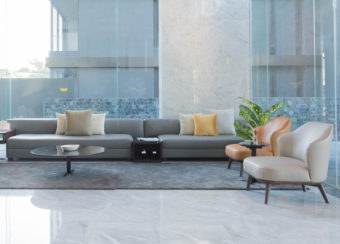May 20, 2020

In recent times, we’ve all seen the devastating effects of the coronavirus on both the health and wellbeing on the population, but also on the world’s economy.
So far we’ve seen countries put on lockdown and curfews enforced, which has resulted in most businesses closing down or having their employees work from home. This has rendered some of the busiest of cities, such as New York, into silent, empty ghost towns.
In a time of crisis, such as COVID-19, what can a building manager or owner do to adapt to changing environments and decrease loss? Most have settled with lowering rental prices or freezing payments for the time being, but this isn’t a long term solution, nor is it sustainable.
The impact and damage caused by the pandemic have clearly changed the way we go about our daily lives, I mean we’ve seen entire countries enforce new and strict regulations to reduce its effects. It’s obvious that office buildings should do the same, especially if they want to continue operating once it’s all ‘over’.
With lockdown restrictions easing up in Western Australia, many employees returned to their usual work stations based in the Perth CBD. But they were also accompanied by an uneasy presence of hesitation.
Who would’ve thought that you’d now rather be late to work then cram into a lift with no more than 2 people? Or the overpowering reluctance to shake someone’s hand, touch a handrail or even opening a door without then baptising your hands with sanitiser two seconds later?
There is now a growing focus on transforming the office into a healthy building thanks to the Healthy Building Movement taken from a book written by John D called Healthy Buildings: How Indoor Spaces Drive Performance and Productivity. Macomber, a senior lecturer at Harvard Business School. But what does this concept mean?
The concept has been built on 9 foundations of a healthy building, which include ventilation, air quality, moisture, thermal health and more as seen in the image below.
Source: hbswk.hbs.edu
A main focus that most people will now pay attention to is ‘security’, which is a term that will take on a broader meaning in a post-pandemic world. The building security we’ve come to understand over the years — metal detectors, security guards & systems — now sees infrared scanners to take temperatures of those who enter. We’ve already seen a number of airports around the world implement these tactics to prevent the spread of viruses and other deadly pathogens.
In addition, the health and wellbeing of employees sharing in a confined space for 8 hours of the day has prompted new technologies that provide real-time data about the conditions inside a building. I.E air quality and temperature.
“There is going to be substantially more awareness and interest on the part of the public, in terms of quality of the spaces that they’re occupying”, said Mr Macomber.
“Pretty quickly, they’ll be selective about their apartments and eventually their offices as well.”
With all this in mind, how can building owners and managers adapt to a post-pandemic world?
Over the years, we’ve seen office desks more clumped together in a bid to improve productivity, communications and use of space. However, with social distancing of 1.5metres at all times reigning down on office design, there is now a bigger need to separate workstations. To maintain the health and safety of all employees, office buildings should consider arranging stations to meet social distancing measures and prevent the spread of the virus.
Consider adding hand sanitizer stations at a number of locations throughout every floor in front of lifts, staircases or any other high foot traffic area. Antibacterial wipes are also a great way for employees to wipe down desks regularly and keep the office environment clean and germ-free.
For many years, open office plans had been all the craze. We’ve seen multi-billion dollar companies, especially the likes of Google and Apple in Silicon Valley, built on the foundations of open floor plans, which increased worker efficiency, productivity and creativity. But if we are to adhere to the rules of social distancing, closed plan offices might be a better solution in preventing the spread of germs.
We’ve already seen the implementation of social distancing signs plastered all around shopping centres, particularly when lining up at the self-checkout section Woolies. Consider adding signs or markings in front of lifts and lobbies, creating circles around desks and dividing corridors into lanes. Encouraging employees to walk in the same direction can help minimise transmission, which has been seen implemented in hospitals.
Consider floor markings and patterns that can naturally lead people in a direction or make them more aware of limits of a space, you can achieve this with carpet tiles or vinyl.

View our commercial project
View our commercial project
View our commercial project
Improving indoor air quality with good ventilation is key in preventing the spread of COVID-19 and can be as simple as opening up a window — providing windows can be opened, since many offices are now sealed. In the event where windows cannot be opened, air filtration systems are an option for office climate control. Don’t forget to get your office air conditioning system inspected, that includes getting your air filters cleaned.
If the funds allow it, you may want to consider retrofitting, remodelling or even rebuilding certain areas of the office given the gravity of the situation. From narrow corridors and doorways, to open plan office areas, the inclusion of more partitions, wider hallways and entry points may help with adhering to social distancing measures and create a safer office environment.
In the meantime, if you’re struggling to manage the impact of the coronavirus, check out Small Business WA’s guide for more tips to keep your business going during the COVID-19 pandemic.